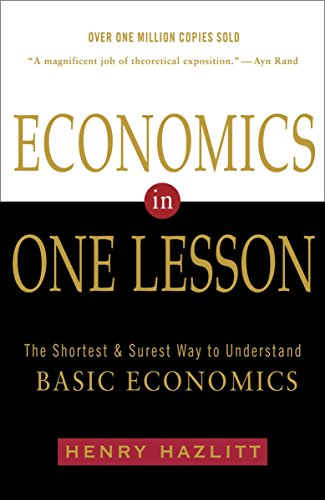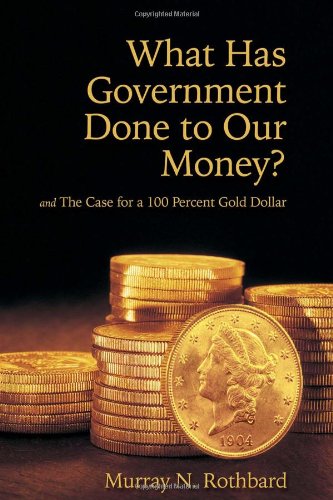Suppose that I am thinking about buying a bond and its yield is 3.5 percent. This is a nominal yield before taxes and before accounting for price inflation. To estimate my real return, I need to estimate future price inflation. If, for example, I think that price inflation is going to be 3.0 percent, then I expect my before-tax yield will be only about 0.5 percent.
Most analysts use the CPI or some variant for measuring price inflation. I prefer to use the growth rate in the monetary base, also known as M0. By this measure, price inflation is much worse than you thought if you use some version of the CPI.
I use the growth rate of the monetary base for three main reasons. First, it is a very accurate measure of the inflation in bank notes of the Federal Reserve (FED). Second, the FED’s bank note inflation is a major cause of changes in prices in the economy. Third, the CPI has major flaws and difficulties.
The inflation measurement problem is something like measuring the changes in average weight of all the fish in the ocean. The FED’s note inflation is like fish food. As it is dropped by helicopters into the ocean, I assume it produces weight gain that otherwise would not have occurred. Measuring the CPI is like measuring how much weight the fish in the ocean have gained. Measuring the change in the monetary base is like measuring how much fish food has been dumped into the ocean.
It’s easy to measure the amount of food the FED drops. It’s very hard to measure the weights of all the different fish. There are so many of them. Some fish will eat the food. Others will not. Some food will be eaten right away. Some will float around for a long time before the fish eat it. The absorption of the feed has lags. New fish will be born and others die, just as new products come into existence and others disappear. Some fish will be so hard to measure that it just won’t be done, just like many services that the CPI simply does not measure.
 End the Fed
Best Price: $1.12
Buy New $8.53
(as of 10:10 UTC - Details)
End the Fed
Best Price: $1.12
Buy New $8.53
(as of 10:10 UTC - Details)
If feed generally inflates the weight of fish, which is hard to measure, why not measure the inflation of the feed itself? If M0 food inflates some prices of some goods right away and others later and if the general price level cannot be measured accurately, and if we are after the purchasing power of the FED’s notes, why not directly measure the inflation of M0 itself?
CPI measurement is a very important problem that goes beyond investment. It affects cost-of-living adjustments. It affects measurement of real product and productivity. If other things are held equal, prices fall when competing businesses find more efficient ways to deliver goods and services. Other things are not held equal. As the monetary base inflates and causes prices in the economy to rise, those price rises tend to negate the price declines that higher productivity causes. The result is that a price index like the CPI remains stable despite the fact that price inflation has occurred. That problem alone discredits the CPI. The monetary base measure of inflation does not have this severe problem.
Let’s look at a few important cases in which we use the monetary base to measure inflation rather than the CPI. The first case is the stock market between 1966 and the present. What has been its real (corrected for inflation) return over these years?
The Dow-Jones Industrial Average (DJIA) went from about 850 to about 10,000 between 1966 and 2009. This is a capital gain at a rate of 5.73 percent a year. Add in an average dividend yield of about 4.25 percent to get about 10 percent overall return. This return is before taxes. Using a 20 percent capital gains rate and a 30 percent ordinary income rate for dividends, the after-tax return is about 7.56 percent, unadjusted for inflation.
The CPI grew at 4.41 percent over this period. (I use continuous compounding.) The usual calculation is to subtract 4.41 from 7.56. That gives a real stock return after taxes of 3.15 percent per year. That is quite good if it’s true. At that rate, $1,000 invested in stocks in 1966 became, in real terms, $3,790 in 2009.
Let’s see what the monetary base adjustment gives us.
As of September, 2008, the monetary base grew by 6.73 percent a year after 1966. This says that the real return on stocks was 7.56 minus 6.73 = 0.83 percent a year. If we use the October, 2009 monetary base, which is post the FED’s explosion in reserves, the growth rate is 8.5 percent a year. Stocks then have a real return using that figure of about —1 percent a year.
At a 1 percent real return, $1,000 invested in 1966 becomes $1,534 in 2009. That’s a lot less than the $3,790 we estimate if we use the CPI.
 Economics in One Lesso...
Best Price: $2.43
Buy New $7.43
(as of 12:35 UTC - Details)
Economics in One Lesso...
Best Price: $2.43
Buy New $7.43
(as of 12:35 UTC - Details)
We may use gold’s price as an alternative to the monetary base if we are careful. Gold is not subject to the problems with the CPI. Furthermore, gold certificates are the asset on the FED’s balance sheet that backs the notes the FED prints. Gold averaged $35.13 a troy ounce in 1966 and is about $1,000 in 2009. Its growth rate is 7.8 percent. This is 1 percent higher than the monetary base growth rate. It is almost the same as the after-tax return on stock. This suggests that stocks in the DJIA have not made any real return for a long time.
The price of gold in 1966 was fixed. Take instead the 1972 average price of $58.16. Then the growth rate is 7.7%. Or take 1973 with its average price of $97.32, in which case the growth is 6.47 percent. The picture does not change much. Gold’s price appreciation has not been far from that of the monetary base’s growth, and both suggest that the CPI understates inflation. Both suggest that stocks have kept up with inflation but provided a real return of about 1 percent at best.
In an inflationary environment, timing one’s purchases and sales becomes very important in order to earn a real return. One must buy at low enough prices so that the prospective return compensates for inflation.
What has been real growth in Gross Domestic Product (GDP) if we use the monetary base as a deflator?
In 1947, the GDP began the year at $237.2 billion. In 2009’s first quarter, it is $14,178 billion. This is a 6.6 percent growth rate unadjusted for inflation in any way.
Over the same period, the monetary base rose by 5.38 percent a year if we stop last September and 6.31 percent if we include the recent period of high growth. Using the September figure, the GDP has grown 1.2 percent a year after taking into account the monetary inflation represented by the growth in the FED’s bank notes outstanding. If the CPI is used, the picture is much more rosy. The CPI went up 3.66 percent a year, so that real GDP growth comes out 2.94 percent a year.
Are Americans better off than they were in 1947 by an amount that is measured by 2.94 percent a year improvement? No one knows how to measure such a thing. I sure don’t. However, it means that Americans are 6 times better off, because $1 becomes $6 if it compounds for 62 years at a rate of 2.94 percent a year. If real income actually grew at the 1.2 percent figure that the monetary base method suggests, then the improvement is by a factor of 2.1. Americans are about twice as well off by this measure. My guess is that inflation has been worse than the CPI index might lead one to believe.
 What Has Government Do...
Best Price: $1.83
Buy New $25.00
(as of 08:05 UTC - Details)
What Has Government Do...
Best Price: $1.83
Buy New $25.00
(as of 08:05 UTC - Details)
For a third and final example, consider high-grade bonds. One source says that bonds provided an average annual return of 2.95 percent between 1932 and 1981, which is less than the CPI inflation of 3.86 percent. It’s even worse if we use the monetary base, for it grew 6.33 percent a year.
Had one bought bonds in the early 1980s when they yielded 12—15 percent, one would have outpaced inflation. The monetary base has grown since then at a rate of about 6.6 percent a year if we stop at last September and 9.34 percent if we stop now. This shows the importance of timing.
The FED’s recent note inflation is off the map. This year the rates of annual growth of the monetary base range from 71 percent to 114 percent, depending on which month you choose. The bond markets don’t look at inflation the way I do. That’s obvious. They are thinking in terms of the CPI. I’m thinking in terms of all that food dumped into the ocean that will sooner or later be eaten. The FED says that it’s going to scoop it all back up.
 Rates of growth of the U.S. monetary base of 6 percent have been the rule for a long time. It seems to me that this will continue at a minimum. The recent rates of 100 percent confirm me in that opinion. Thinking about this in a very conservative fashion, a government bond should provide a before-tax yield of 7 percent at a minimum. That’s 1 percent real return and 6 percent inflation compensation, using my measure of inflation. If the bonds have duration risk, then add on a term premium of 1 percent, say. I will not invest in long-term U.S. government bonds, since the yields are a paltry 3.5 percent. Actually, this reasoning is just for the sake of rigor. I wouldn’t look twice at bonds in this environment at these yields.
Rates of growth of the U.S. monetary base of 6 percent have been the rule for a long time. It seems to me that this will continue at a minimum. The recent rates of 100 percent confirm me in that opinion. Thinking about this in a very conservative fashion, a government bond should provide a before-tax yield of 7 percent at a minimum. That’s 1 percent real return and 6 percent inflation compensation, using my measure of inflation. If the bonds have duration risk, then add on a term premium of 1 percent, say. I will not invest in long-term U.S. government bonds, since the yields are a paltry 3.5 percent. Actually, this reasoning is just for the sake of rigor. I wouldn’t look twice at bonds in this environment at these yields.
Risk is in the eye of the beholder. I see the inflation risk, and I avoid the investment. The market sees the risk differently. The marginal buyers in this market may be central banks that are buying the dollar in order to prevent their exchange rates from rising. They reportedly have been large buyers in the last few months. They may be holding yields down. They are aware of the risk of piling up dollar bonds, but their risk aversion is far less than mine since it’s not their money at risk. Will I regret not investing if yields do not rise or if they decline? Not at all, because to me the risk is real. Besides, there are other fish in the ocean.





